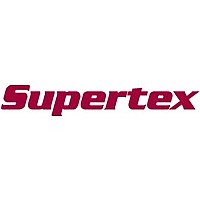HV9910 Supertex, HV9910 Datasheet - Page 7

HV9910
Manufacturer Part Number
HV9910
Description
Universal High Brightness LED Driver
Manufacturer
Supertex
Datasheet
1.HV9910.pdf
(11 pages)
Available stocks
Company
Part Number
Manufacturer
Quantity
Price
Part Number:
HV9910
Manufacturer:
明智类比
Quantity:
20 000
Part Number:
HV9910B
Manufacturer:
SUPERTE
Quantity:
20 000
Company:
Part Number:
HV9910BLG-G
Manufacturer:
ST
Quantity:
1 000
Part Number:
HV9910BLG-G
Manufacturer:
SUPERTE
Quantity:
20 000
Company:
Part Number:
HV9910BNG-G
Manufacturer:
Supertex
Quantity:
1 951
Part Number:
HV9910BNG-G
Manufacturer:
MICROCHIP/微芯
Quantity:
20 000
Part Number:
HV9910CLG-G
Manufacturer:
MICROCHIP/微芯
Quantity:
20 000
Company:
Part Number:
HV9910LG
Manufacturer:
SUPERTEX
Quantity:
637
www.DataSheet4U.com
Output Open Circuit Protection
When the buck topology is used, and the LED is
connected in series with the inductor, there is no
need for any protection against an open circuit
condition in the LED string. Open LED connection
means no switching and can be continuous.
However, in the case of the buck-boost or the
Flyback topology the HV9910 may cause excessive
voltage stress of the switching transistor and the
rectifier diode and potential failure. In this case, the
HV9910 can be disabled by pulling the PMW_D pin
to ground when the over voltage condition is
detected.
DC/DC Low Voltage Applications
Buck Converter Operation
The buck power conversion topology can be used
when the LED string voltage is needed to be lower
than
procedure for a buck LED driver outlined in the
previous chapters can be applied to the low voltage
LED drivers as well. However, the designer must
keep in mind that the input voltage must be
maintained higher than 2 times the forward voltage
drop across the LEDs. This limitation is related to
the output current instability that may develop when
the HV9910 buck converter operates at a duty
cycle greater than 0.5. This instability reveals itself
as an oscillation of the output current at a sub-
harmonic of the switching frequency.
Flyback (Buck-Boost) Operation
This power conversion topology can be used when
the forward voltage drop of the LED string is higher,
equal or lower than the input supply voltage. For
example,
appropriate when input voltage is supplied by an
automotive battery (12V) and output string consists
of three to six HB LEDs, as the case may be for tail
and break signal lights.
In the buck-boost converter, the energy from the
input source is first stored in the inductor or a
Flyback transformer when the switching transistor
is ON. The energy is then delivered to the output
during the OFF time of the transistor. When the
energy stored in the Flyback inductor is not fully
depleted by the next switching cycle (continuous
conduction mode) the DC conversion between
input and output voltage is given by:
V
OUT
= - V
the
IN
*D/(1-D)
the
input
buck-boost
supply
voltage.
topology
The design
can
be
7
The output voltage can be either higher or lower
than the input voltage, depending on duty ratio.
Let us discuss the above example of an automotive
LED driver that needs to drive three HB LEDs at
350mA.
Knowing the nominal input voltage V
nominal
D=V
Then, given the switching frequency, in this
example f
MOSFET transistor can be calculated:
Ton=D/f
The required value of the inductor is given by:
L = V
Output Capacitor
Unlike the buck topology, the buck-boost converter
requires an output filter capacitor to deliver power
to the LED string during the ON time of switching
the transistor, when the Flyback inductor current is
diverted from the output of the converter.
In order to average the current in the LED, this
capacitor must present impedance to the switching
output AC ripple current that is much lower than the
dynamic impedance R
assume R
attenuate the switching ripple by a factor of 10, a
capacitor with equivalent series resistance (ESR) of
0.3 Ohm is needed. A chip SMT tantalum capacitor
can be selected for this purpose.
LEDs
IN
* Ton/(0.3 * Iled) = 0.98mH, use 1mH
/(V
OSC
OSC
duty
OUT
IN
=8.6 microsecond
+V
=50KHz, the required on-time of the
=3 Ohm in our example, in order to
LEDs
ratio
)=9/(12+9)=0.43
OUT
can
of the LED string. If we
be
determined,
HV9910
IN
=12V, the
C110504
as














